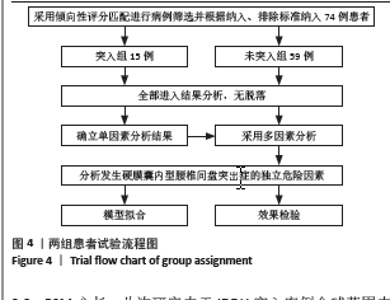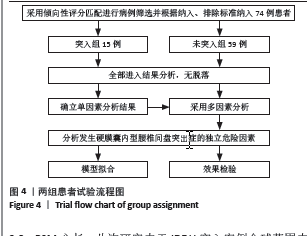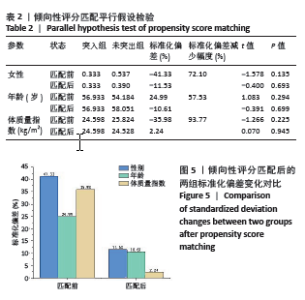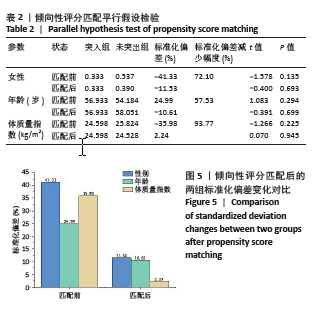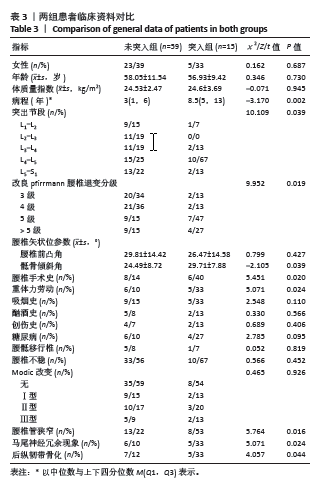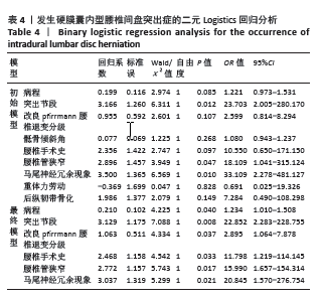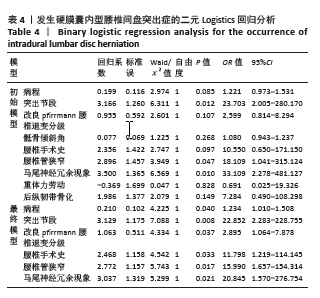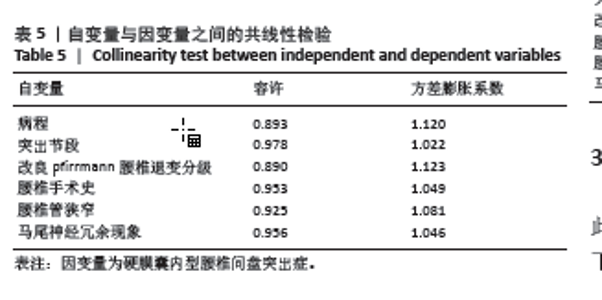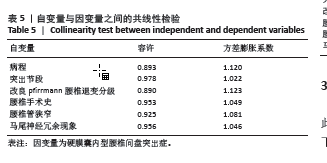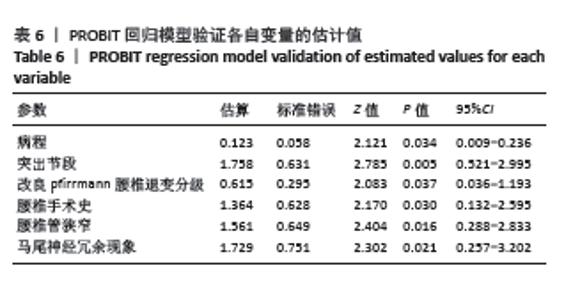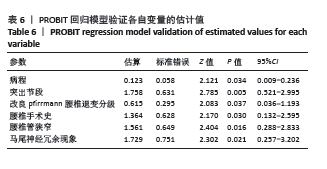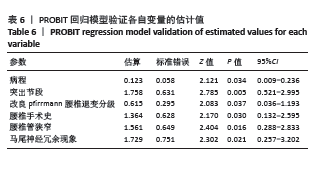[1] 鲁玉来. 腰椎间盘突出症[J]. 中国矫形外科杂志,2004(Z4):141-144.
[2] KARAVELIOGLU E, ESER O. Intraradicular lumbar disc herniation in a rare localization: case report. Clin Neurol Neurosurg. 2013;115(2): 232-234.
[3] GE CY, HAO DJ, YAN L, et al. Intradural lumbar disc herniation: a case report and literature review. Clin Inter Aging. 2019;14:2295-2299.
[4] CHENG CH, CHANG CC, LIN HL, et al. Intradural lumbar disc herniation: A case report and literature review. Heliyon. 2022;8(12):e12257.
[5] 王飞,于大鹏,赵廷宝. 硬膜囊内型腰椎间盘突入出症的诊治并文献复习[J]. 实用医药杂志,2013,30(12):1067-1069.
[6] LUO D, JI C, XU H, et al. Intradural disc herniation at L4/5 level causing Cauda equina syndrome: A case report. Medicine(Baltimore). 2020;99(7):e19025.
[7] WEI MC, CASTLE-KIRSZBAUM M, KAM JKT. Intraoperative Ultrasound and Findings of Lumbar Intradural Disk Herniation Causing Cauda Equina Syndrome. World Neurosurg. 2023;179:5-7.
[8] APRÍGIO RM, CARAMANTI RL, SANTOS FOR, et al. Intradural disc herniation at the L1-L2 level: A case report and literature review. Surg Neurol Int. 2019;10:196.
[9] 罗文琪,李月影,李长宽,等. 硬膜内型腰椎间盘突出症的诊治进展[J]. 中国脊柱脊髓杂志,2017,27(3):272-275.
[10] ARNOLD PM, WAKWAYA YT. Intradural disk herniation at L1–L2: report of two cases. J Spinal Cord Med. 2011;34(3):312-314.
[11] KLOPFENSTEIN J, HAN PP, KIM L, et al. Herniated lumbar disc sequestered between the internal and external dural sleeves: case report. Barrow Quart. 2003;19:25-27.
[12] 卢钰,张颖,解京明,等. 硬膜内椎间盘突出症2例报告与文献综述 [J]. 中国矫形外科杂志,2019,27(5):443-447.
[13] GRIFFITH JF, WANG YXJ, ANTONIO GE, et al. Modified Pfirrmann grading system for lumbar intervertebral disc degeneration. Spine. 2007; 32(24):E708-E712.
[14] 陈辰,张凯,张锋,等. 健康成人腰椎椎间隙高度的解剖学分型及临床意义[J]. 山东大学学报(医学版),2019,57(5):43-47+55.
[15] 孙卓然,李危石,陈仲强,等. 正常国人脊柱-骨盆矢状位序列拟合关系研究[J]. 中国脊柱脊髓杂志,2015,25(1):1-5.
[16] 李康印,解朋波. 腰椎管狭窄症的影像学诊断[J]. 中国骨伤,2009, 22(10):747-749.
[17] 曹和涛,万娟,侯冬梅,等. 马尾神经根冗余MRI特征分析[J]. 临床放射学杂志,2020,39(4):658-663.
[18] IGUCHI T, KANEMURA A, KASAHARA K, et al. Lumbar instability and clinical symptoms: which is the more critical factor for symptoms: sagittal translation or segment angulation? Clin Spine Surg. 2004;17(4): 284-290.
[19] MODIC MT, STEINBERG PM, ROSS JS, et al. Degenerative disk disease: assessment of changes in vertebral body marrow with MR imaging. Radiology. 1988;166(1):193-199.
[20] JIN Y, ZHAO B, ZHAO X, et al. Lumbar intradural disc herniation caused by injury: a case report and literature review. Orthop Surg. 2023;15(6):1694-1701.
[21] SHARMA A, SINGH V, SANGONDIMATH G, et al. Intradural disc a diagnostic dilemma: case series and review of literature. Asian J Neurosurg. 2018;13(4):1033-1036.
[22] DUCATI LG, SILVA MV, BRANDAO MM, et al. Intradural lumbar disc herniation: report of five cases with literature review. Eur Spine J. 2013;22:404-408.
[23] GHAFFARI-RAFI A, NOSOVA K, KIM K, et al. Intradural disc herniation in the setting of congenital lumbar spinal stenosis. Neurochirurgie. 2022; 68(3):335-341.
[24] WASSERSTROM R, MAMOURIAN AC, BLACK JF, et al. Intradural lumbar disk fragment with ring enhancement on MR. Am J Neuroradiol. 1993;14(2):401-404.
[25] ARNOLD PM, WAKWAYA YT. Intradural disk herniation at L1–L2: report of two cases. J Spinal Cord Med. 2011;34(3):312-314.
[26] NAM KH, LEE IS, SONG YS, et al. Imaging characteristics of intradural disc herniation: a comparison with large disc extrusion. Eur J Radiol. 2021;137:109569.
[27] ÖZER AF, ÖZEK MM, PAMIR MN, et al. Intradural rupture of cervical vertebral disc. Spine. 1994;19(7):843-845.
[28] YILDIZHAN A, PAŞAOĞLU A, OKTEN T, et al. Intradural disc herniations pathogenesis, clinical picture, diagnosis and treatment. Acta Neurochir. 1991;110:160-165.
[29] 连平,孙荣华,刘大雄,等. 腰椎间盘突入硬膜囊内七例分析与病理机制探讨[J]. 中华骨科杂志,1994,14(5):294-297.
[30] 路闯,叶应荣,袁宏伟,等. 游离型腰椎间盘突出症32例报告及分型探讨[J]. 中国脊柱脊髓杂志,2002,12(2):52-54.
[31] FLOETH F, HERDMANN J. Chronic dura erosion and intradural lumbar disc herniation: CT and MR imaging and intraoperative photographs of a transdural sequestrectomy. Eur Spine J. 2012;21:453-457.
[32] IHEJIRIKA RC, TONG Y, PATEL K, et al. Intradural lumbar disc herniation: illustrative case. J Neurosurg Case Lessons. 2021;2(18): CASE21336.
[33] FRANCIO VT, WIE CS, MURPHY MT, et al. Multispecialty perspective on intradural disc herniation: diagnosis and management-A case report. Anesthesia Pain Med. 2022;17(2):221-227. |
